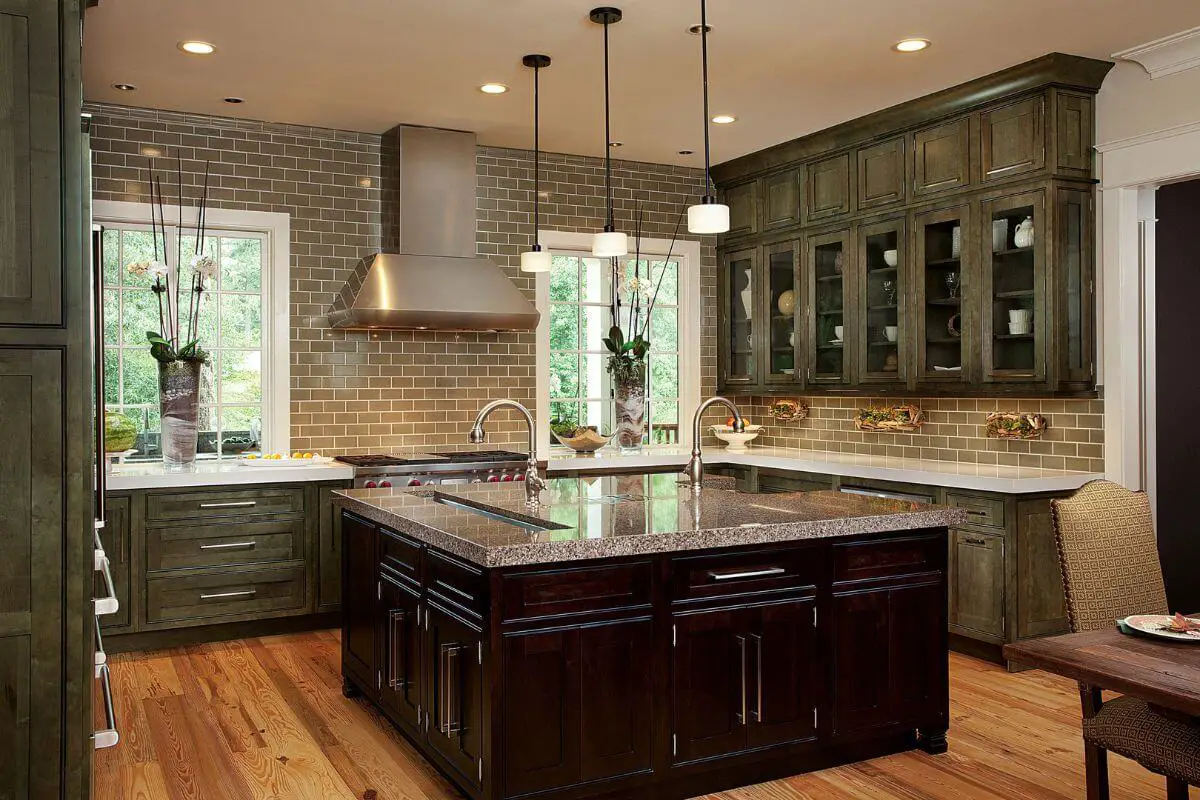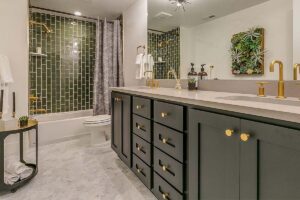Introduction
Selecting kitchen cabinets is one of the most critical decisions when remodeling or designing your kitchen. Two popular choices are hickory and maple cabinets, each offering unique characteristics and aesthetics. In this comparison, we’ll explore the differences and similarities between hickory and maple cabinets to help you make an informed choice for your kitchen.
Hickory Cabinets
Appearance and Features
Hickory cabinets are known for their rustic and distinctive appearance. They showcase a prominent grain pattern with variations in color, from light to dark shades. The cabinets often feature mineral streaks and knots, adding to their character and charm. Hickory cabinets create a warm, inviting, and visually appealing kitchen atmosphere.

Durability
Hickory is one of the hardest and most durable hardwoods available, making hickory cabinets exceptionally sturdy and resistant to wear and tear. They can withstand daily kitchen use, making them an excellent choice for families or busy kitchens.
Maintenance
Hickory cabinets are relatively low-maintenance. Regular cleaning with a mild detergent and water is usually sufficient to keep them looking their best. Periodic resealing or refinishing may be necessary to maintain the wood’s appearance and protection.
Maple Cabinets
Appearance and Features
Maple cabinets offer a clean and timeless look with a smooth, fine grain pattern. They are available in various finishes, including natural, light, and dark stains, allowing for versatility in kitchen design. Maple cabinets lend themselves well to both traditional and contemporary kitchen styles.
Durability
Maple is a hardwood known for its durability and resistance to dents and scratches. Maple cabinets can endure daily use and are less likely to show wear compared to some other wood options. They are an excellent choice for kitchens that require long-lasting cabinets.
Maintenance
Maintaining maple cabinets is relatively easy. Routine cleaning with a damp cloth and mild detergent is usually sufficient. Like hickory, periodic refinishing or resealing may be necessary to preserve the cabinet’s appearance and protect the wood.
Key Differences
- Appearance: The primary difference between hickory and maple cabinets is their appearance. Hickory cabinets have a rustic, distinctive look with pronounced grain patterns, while maple cabinets offer a smoother, more refined appearance with a fine grain pattern.
- Durability: Both hickory and maple are durable woods, but hickory is considered one of the hardest hardwoods, making hickory cabinets slightly more resistant to wear and tear.
Conclusion
Choosing between hickory and maple cabinets ultimately depends on your design preferences and lifestyle. Hickory cabinets are ideal for those seeking a rustic and character-rich kitchen with outstanding durability. On the other hand, maple cabinets offer a clean and timeless appearance suitable for various design styles and provide excellent durability for everyday use. Consider your kitchen’s overall style, your maintenance preferences, and your household’s needs when making your decision. Either way, both hickory and maple cabinets can enhance the functionality and beauty of your kitchen space.
FAQs
1. What is the main advantage of hickory cabinets in terms of aesthetics?
- Hickory cabinets are known for their rustic and distinctive appearance, featuring a prominent grain pattern, mineral streaks, and knots. The main advantage is the unique, character-rich look they provide to the kitchen.
2. Are hickory cabinets suitable for modern or contemporary kitchen designs, or do they work better in traditional settings?
- Hickory cabinets are typically favored in traditional and rustic kitchen designs due to their distinctive appearance. However, they can be used in modern designs to create a striking contrast and add warmth to the space.
3. Do maple cabinets come in a variety of finishes, and can they be customized to match different kitchen styles?
- Yes, maple cabinets are available in various finishes, including natural, light, and dark stains. This versatility allows them to be customized to complement different kitchen styles, from traditional to contemporary.
4. Which type of cabinet, hickory or maple, is more resistant to dents and scratches?
- Both hickory and maple cabinets are durable and resistant to dents and scratches. However, maple is known for its exceptional durability and is less likely to show wear compared to some other wood options.
5. Are hickory cabinets higher maintenance compared to maple cabinets due to their distinctive appearance?
- Hickory cabinets are not necessarily higher maintenance, but they may require periodic refinishing or resealing to preserve their distinctive appearance and protect the wood. Maple cabinets have a smoother surface, which can be easier to clean.
6. Can I paint hickory or maple cabinets if I want to change their color in the future?
- Yes, both hickory and maple cabinets can be painted if you wish to change their color. Proper surface preparation and the use of suitable paint and primer are essential for a successful paint job.
7. Do hickory and maple cabinets have a significant difference in cost, and which one is typically more budget-friendly?
- The cost of hickory and maple cabinets can vary based on factors such as the cabinet style, quality, and finish. In general, maple cabinets may be more budget-friendly compared to hickory cabinets, which can be pricier due to their unique appearance and durability.
8. Are there any specific design considerations when choosing between hickory and maple cabinets for a kitchen remodel?
- When choosing between hickory and maple cabinets, consider the overall style of your kitchen, your desired aesthetic, and the durability required for your lifestyle. Additionally, think about how the cabinet choice complements other design elements in your kitchen, such as countertops and backsplashes.
9. Can I mix and match hickory and maple cabinets in the same kitchen design for a unique look?
- Mixing and matching hickory and maple cabinets can create a distinctive and eclectic kitchen design. However, it’s essential to ensure that the combination complements your overall design concept and doesn’t create visual clutter.



